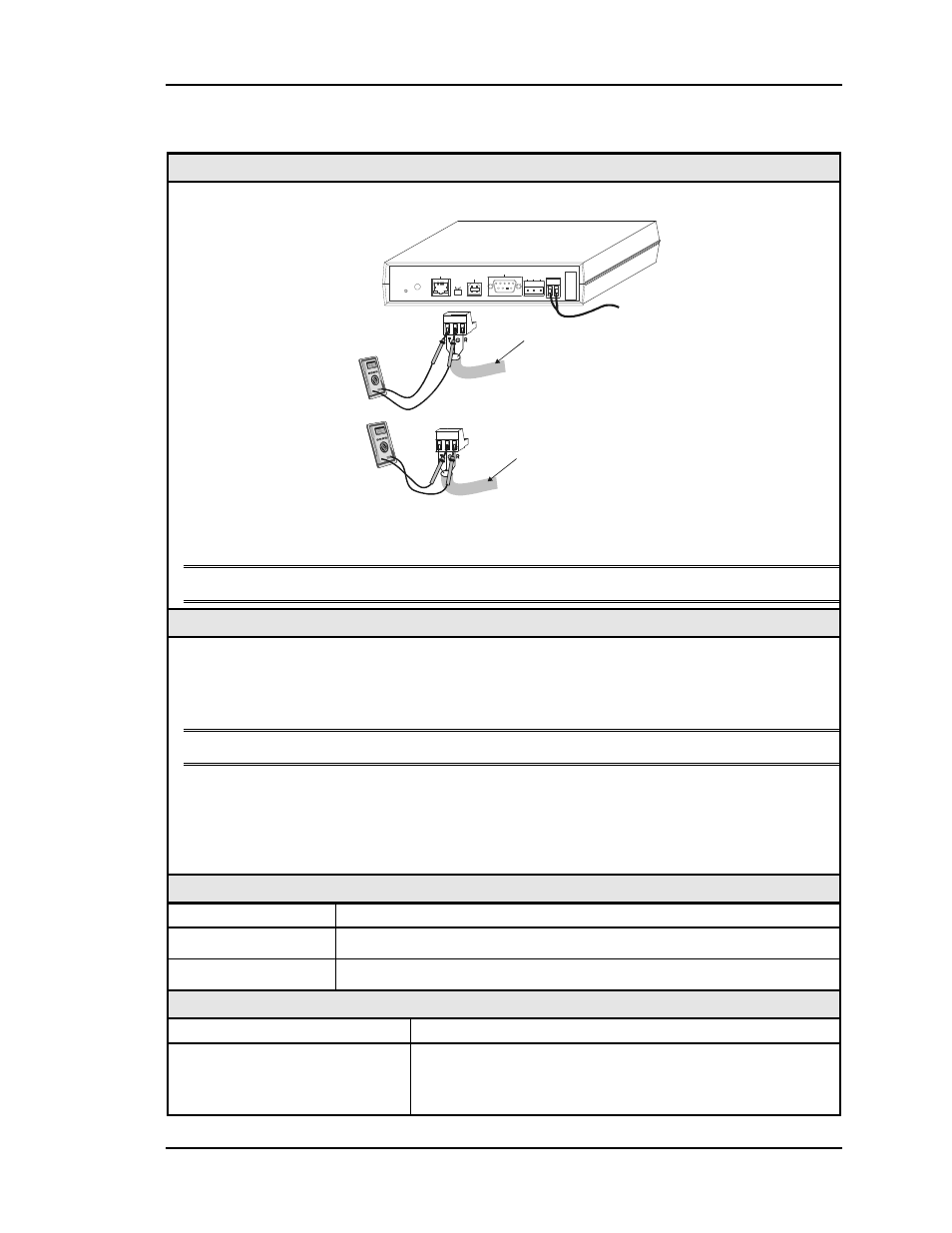Checking the cv local loop, Diagram, Overview – Auto-Zone Control Systems Auto-Zone CV & CV-EX Systems Installation & Operation (Version 01C) User Manual
Page 99: Measurements, Action, Network loop acceptable range, Condition action

Auto-Zone CV & CV-EX
Section 4
Start-Up and Troubleshooting
4-21
Checking the CV Local Loop
Diagram
Set Your Meter
To Read DC Volts
+
-
+
-
Communications
Loop
Disconnected
Communications
Loop
Disconnected
+
-
T-To-G
+2.4 VDC
To
+3.3 VDC
R-To-G
+2.4 VDC
To
+3.3 VDC
CommLink IV
To 24 VAC
Power Supply
MODEM
RS-232
Serial #
COMPUTER
USB
10/100
ETHERNET
DIAG
24
V
T G R
GN
D
485 LOOP POWER
ACT
LNK
USB
Co
n
fi
g
No
rm
a
l
The CommLink IV Must Be
Powered Up For These Tests
+
-
The indicated values are typical of a normal system; actual readings may deviate slightly
due to the number of units connected and other system specific factors.
Note: All of the connected CV Controllers should be powered up for this test.
Overview
This is a “quick check” to determine if any of the driver chips on the attached CV Control-
lers are damaged. Since all units will “float” both of their communications connections at
about 2.45 Volts, you can quickly check the entire communications loop by unplugging it at
the CommLink IV.
Note: Be sure that the loop you are testing does not have a short circuit from T to R.
Tip: The Loop LED (located on the front panel) should “flicker” when the CommLink IV
is attempting to communicate with the CV Controllers. There is a noticeable change in
the flicker when the loop is disconnected if you observe a normal functioning unit.
When the loop is reconnected, it may take up to 60 seconds before the CommLink IV
re-establishes communications with the CV Controllers.
Measurements
Network Loop
Acceptable Range
T - G (SHLD)
2.4 - 3.3 Volts DC
R - G (SHLD)
2.4 - 3.3 Volts DC
Action
Condition Action
If voltages are too high or too
low on either side.
One or more of the CV Controllers has a damaged
Comm driver chip. Disconnect CV Controllers one at a
time to isolate the problem.
